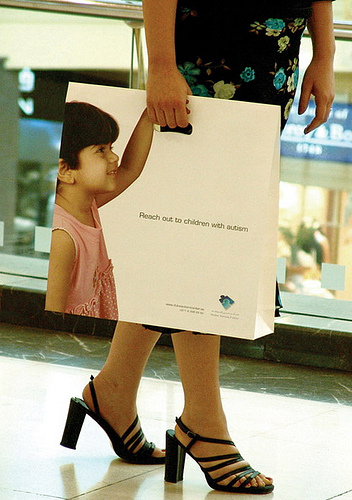Most things in life are distributed normally, which means they all show a bell curve when quantified using a sensible measure. For instance, the marks scored by a large enough number of students has a normal distribution, with very few scoring close to zero or close to 100%, and most bunching around the class average. This distribution is the basis for letter grading. Of course, this assumes a sensible test — if the test is too easy (like a primary school test given to university students), everybody would score close to 100% and there would be no bell curve, nor any reasonable way of letter-grading the results.
If we could sensibly quantify traits like intelligence, insanity, autism, athleticism, musical aptitude etc, they should all form normal Gaussian distributions. Where you find yourself on the curve is a matter of luck. If you are lucky, you fall on the right side of the distribution close to the tail, and if you are unlucky, you would find yourself near the wrong end. But this statement is a bit too simplistic. Nothing in life is quite that straight-forward. The various distributions have strange correlations. Even in the absence of correlations, purely mathematical considerations will indicate that the likelihood of finding yourself in the right end of multiple desirable traits is slim. That is to say, if you are in the top 0.1% of your cohort academically, and in terms of your looks, and in athleticism, you are already one in a billion — which is why you don’t find many strikingly handsome theoretical physicists who are also ranked tennis players.
The recent world chess champion, Magnus Carlsen, is also a fashion model, which is news precisely because it is the exception that proves the rule. By the way, I just figured out what that mysterious expression “exception that proves the rule” actually meant — something looks like an exception only because as a general rule, it doesn’t exist or happen, which proves that there is a rule.
Getting back to our theme, in addition to the minuscule probability for genius as prescribed by mathematics, we also find correlations between genius and behavioral pathologies like insanity and autism. A genius brain is probably wired differently. Anything different from the norm is also, well, abnormal. Behavior abnormal when judged against the society’s rules is the definition of insanity. So there is a only a fine line separating insanity from true genius, I believe. The personal lives of many geniuses point to this conclusion. Einstein had strange personal relationships, and a son who was clinically insane. Many geniuses actually ended up in the looney bin. And some afflicted with autism show astonishing gifts like photographic memory, mathematical prowess etc. Take for instance, the case of autistic savants. Or consider cases like Sheldon Cooper of The Big Bang Theory, who is only slightly better than (or different from) the Rain Man.
I believe the reason for the correlation is the fact that the same slight abnormalities in the brain can often manifest themselves as talents or genius on the positive side, or as questionable gifts on the negative side. I guess my message is that anybody away from the average in any distribution, be it brilliance or insanity, should take it with neither pride nor rancor. It is merely a statistical fluctuation. I know this post won’t ease the pain of those who are afflicted on the negative side, or eliminate the arrogance of the ones on the positive side. But here’s hoping that it will at least diminish the intensity of those feelings…
Photo by Arturo de Albornoz 
